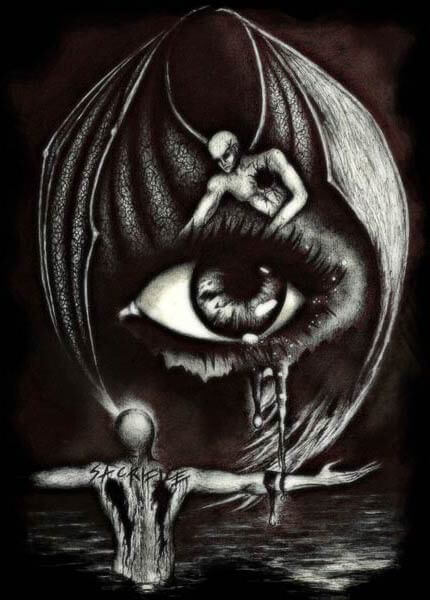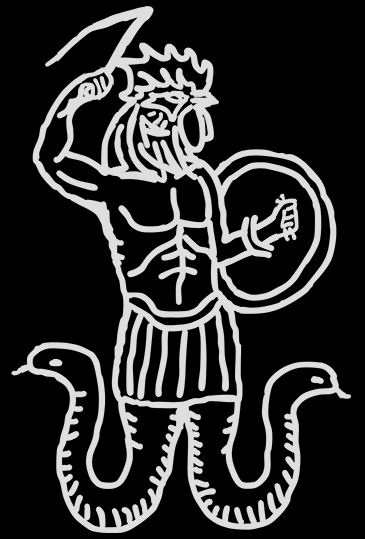Many rational thinkers dismiss Tarot as superstition or fortune-telling. As a result, the seeker often hears, ‘I don’t believe in Tarot.’ Yet this sneer of disbelief says more about expectations than the cards themselves. Whether or not one accepts mystical explanations, Tarot and similar tools can still yield deep insights. Even sceptics find that the rich imagery and structure of a Tarot reading function like a psychological mirror. On this page, we’ll show how divination succeeds under scepticism, by drawing on projection, archetypes, and empirical psychology. You need no blind faith, only curiosity, to use Tarotsmith’s tools as rigorous guides to your mind.
Projection and Subconscious Patterning
Tarot readings hinge on projection. In psychology, projection means attributing your own unconscious content to something outside yourself. Carl Jung observed that ‘Projection is one of the commonest psychic phenomena… Everything that is unconscious in ourselves we discover in our neighbour’[1]. In Tarot, the ‘neighbour’ is the card image. When you draw a card, your mind instinctively maps hidden concerns or hopes onto its symbols. In effect, the card acts like a psychological Rorschach. As one commentary notes, the tarot ‘provides an opportunity for psychological projection: projecting one’s thoughts onto external stimuli like images on cards… [which] allows individuals access [to] deeper layers within themselves’[2]. In practice, this means that even random cards acquire personal meaning. For example, if you draw The Three of Swords (often associated with heartache) while troubled about a relationship, you may find yourself naturally interpreting its imagery in terms of your situation. The process isn’t magic so much as pattern-matching: your unconscious fills in the blanks, bringing shadowed feelings into view. Over time, guided interpretation of these projections can reveal persistent themes, turning vague worry into a clear insight. In short, Tarot’s symbolic visuals become mirrors of your inner self, mapping subconscious patterns back onto your conscious life[1][2].
Archetype Resonance
Underlying the cards are archetypes, universal motifs shared by all humans. Jung defined archetypes as ‘universal, symbolic patterns embedded deep within the collective unconscious of every human being’[3]. These are innate storylines like the Hero’s Journey, the Wise Old Man, or the Great Mother. Tarot’s Major Arcana are built from such motifs. When the Tower card appears, we see a lightning-struck tower collapsing, an image of sudden upheaval or revelation. Even a doubtful mind may gasp at its power: as one guide explains, ‘The Tower represents sudden upheaval or revelation’ in life[4]. That momentary shock comes from shared experience: we’ve all felt world-wrenching change at some point. Likewise, The World card (often showing a dancing figure encircled by a wreath) embodies completion and wholeness. These images echo a collective soundtrack in our psyche[5].
A sceptic’s first encounter can be striking. Imagine drawing The Hermit, a lone figure with a lantern, just as you feel lost. You might think, ‘How could this old illustration know I’ve been feeling alone?’ In truth, the lantern-bearing figure is an archetype of guidance that every culture recognises. As Jungian therapist Hannah Green notes, tarot ‘acknowledge[s] all of us’ by externalising inner parts of ourselves. In her words, ‘Tarot imagery can help us identify, acknowledge… and integrate different parts of Self’[6]. In other words, the cards don’t have secret knowledge; they tap into timeless images you already carry inside. The resonance of these archetypes can jolt even a rational observer into noticing connections. When a card aligns uncannily with your mood or situation, it feels less like coincidence and more like an inner truth surfacing through a shared symbol.

The Mirror Model of Divination
Tarot is best understood not as crystal-ball voodoo but as a mirror. Tarotsmith’s decks and spreads are designed to reflect your psyche back to you. In practical terms, that means the cards give back what you put in. Consider the famous modern summary: ‘Tarot is not about predicting the future; it’s a tool for reflection, offering us a mirror to our inner selves and guiding our journey through the mystery of life’[7]. In other words, the cards provide themes and imagery that help you introspect. They do not chart objective destiny; they simply mirror your current concerns in vivid form.
This mirror model has real psychological support. Cognitive research shows that humans are wired to spot patterns even in random data. Projective tests (like inkblots or storytelling cards) rely on this: our minds instinctively narrate ambiguous images. Tarot works the same way. As one observer on a science forum noted, ‘Tarot cards are projectives, like a Rorschach test’[8]. The deck hands you an evocative symbol, and you fill in the details. Importantly, this process is guided; it’s not cold guessing. The structured spreads and the reader’s questions focus the seeker’s attention. ‘Scientific’ psychology calls this guided introspection: studies show that when we direct our own analysis (rather than receive answers), we often gain deeper insight.
Benefits of the mirror model:
– Insight into hidden feelings: The card images externalise inner emotions. By observing how you react to a card (guilty? relieved? anxious?), you learn what matters to you. Over time, repeating readings reveals shifting patterns, strengthening self-awareness.
– Constructing meaningful narratives: A reading encourages the seeker to tell a story about the cards. This narrative framing helps you organise chaotic thoughts into coherent reflections. As you explain how a card’s symbolism fits your life, new connections emerge that pure logic might miss.
Rather than defying reason, the mirror model invites a curious mind to experiment. You focus questions, interpret images, and note what insights arise. Empirical psychology actually endorses this kind of ‘active imagination’. It’s similar to journal-writing or cognitive therapy exercises. By treating the Tarot as a reflective instrument, you turn belief into observation. You do the work; the cards only show you what you put there. In Jung’s view, anything that yields insight, even if the mechanism isn’t fully understood, has practical value. He warned that a narrow rationalist ‘turns away with horror’ from unexpected unconscious phenomena[9]. Instead, we invite the seeker to look in the mirror and see what’s revealed.
Addressing Scepticism Head‑On
Sceptics often raise familiar objections. For example:
– Randomness: ‘The card draw is random, so how can it matter?’ True, shuffling makes outcomes unpredictable. But human brains excel at finding patterns in randomness. We’re prone to apophenia: seeing meaning in chance. When you see a card that fits, it’s not clairvoyance but your own meaning-making in action. Psychology notes that we instinctively interpret ambiguous stimuli (like inkblots or Tarot scenes) in personally meaningful ways[8][2].
– Cold reading: ‘The reader just says vague positives and people fill the rest in.’ A professional Tarot reader actually does something different: they listen to your cues and guide you to make connections. Rather than spoon-feed predictions, they encourage you to relate symbols to your life. This is closer to therapy than fakery.
– Self-fulfilling prophecy: ‘People change behaviour to make the reading come true.’ It’s true that expectation can influence outcomes. In fact, that’s similar to the placebo effect in medicine: belief can change perception. But here the goal isn’t to ‘predict’ a fixed future, it’s to provoke self-inquiry. Even if the process uses expectation, it often serves to empower the seeker. You aren’t passive: you formulate questions and test assumptions.
In practice, these objections dissolve under scrutiny. Pattern-recognition research shows our minds are always active participants in any divinatory session. Tarot experts point out that using a reading as feedback turns it into a kind of experiment. You can refine your questions, track how often a card’s advice feels true, and adjust your approach—much like a scientist records data and refines hypotheses. In effect, Tarot guided by reasoned follow-up is a structured form of introspection, not gullible magic.
‘I was a complete sceptic at first, but my first reading was eerie. The cards reflected exactly what I’d been avoiding in my mind.’ – Alex, 29, software engineer and former sceptic
Experiences like Alex’s are surprisingly common. Once someone treats the cards as mirrors instead of omens, even staunch critics find value. The ‘mysticism’ fades when you see it as you asking yourself questions through images.
Integrating Divination into Rational Inquiry
Even if you approach Tarot scientifically, you can use it in practical ways. Think of a reading as a personal experiment: jot down hypotheses, gather evidence, and draw conclusions. Some useful exercises include:
- Journal your readings. Write down your question, the card(s) drawn, and your immediate thoughts. Later, check how those insights played out. For example, if you asked about a career decision, record how your interpretation compared to real events. Over time, you’ll see which symbols consistently reflect your concerns.
- Run a card-test. Pick a question with a measurable outcome (e.g. ‘Will I feel happier at the next meeting?’). Do a reading, then objectively rate the result later. This is like a mini ‘study’: you observe whether the reading’s guidance aligned with the outcome. It won’t prove future-telling, but it will show how your mind used the information.
- Use card-guided journalling. Draw a card and free-write about how its imagery relates to your life. Therapists note that moving an inner state to the outside world ‘calms our nervous system and helps us take a step back’[10]. Writing about what you see in a card can generate unexpected empathy and clarity.
In these methods the seeker acts as both experimenter and subject. You refine your questions and analyses as you go, much like a lab research project on your own psyche. This demystifies divination: you don’t need to be right about destiny, only honest with yourself.
Conclusion & Call to Action
Belief in magic is not a prerequisite for insight. By reframing Tarot as a mirror, not a crystal ball, the seeker can use these tools with rigorous curiosity. The cards simply reflect the questions you ask and the issues you’ve been pondering. We invite you to put this to the test: use Tarotsmith’s decks and spreads as structured self-inquiry. Try one of our readings or exercises without any expectation of ‘supernatural’ results. Measure what you learn about yourself. In that spirit, experience divination as a tool of self-discovery on your own terms. The proof is in the insight, not in belief. Whether you remain a sceptic or become a student of the psyche, the cards are there to reveal what you already know deep down.
References:
[1] The Quotable Jung – Chapter 1
https://assets.press.princeton.edu/chapters/s10550.pdf
[2] [4] [5] The Tarot: Popular – but can it actually ‘work?’ – Crystal Vaults
[3] Carl Jung’s Theory of Personality
[6] [10] Jungian Tarot — Hannah Green Therapy
https://www.hannahgreentherapy.com/blog/2021/5/25/jungian-psychology-and-working-with-the-tarot
[7] Quote by Tarot Master Roger: ‘Tarot is not about predicting the future; it’s …’
https://www.goodreads.com/quotes/11746082-tarot-is-not-about-predicting-the-future-it-s-a-tool
[8] Tarot cards are a genuinely helpful method of probing one’s psyche and I’ve used… | Hacker News
https://news.ycombinator.com/item?id=35138347
[9] I Ching | Foreword To The I Ching By Carl Gustav Jung

